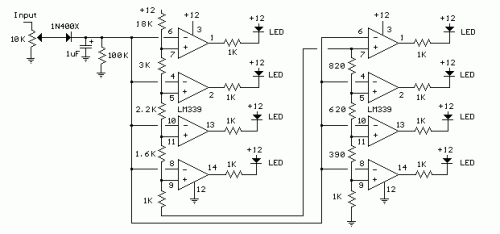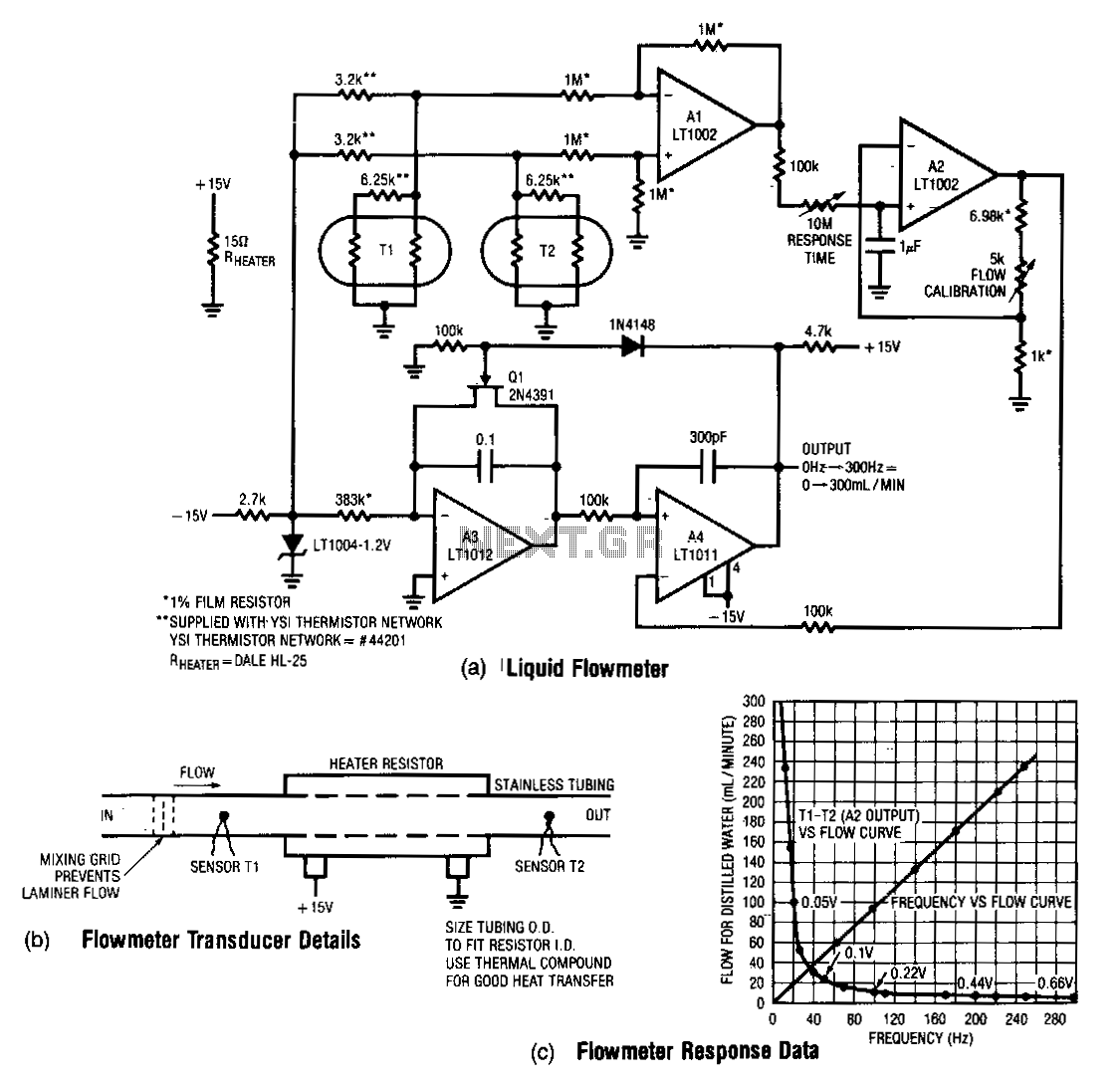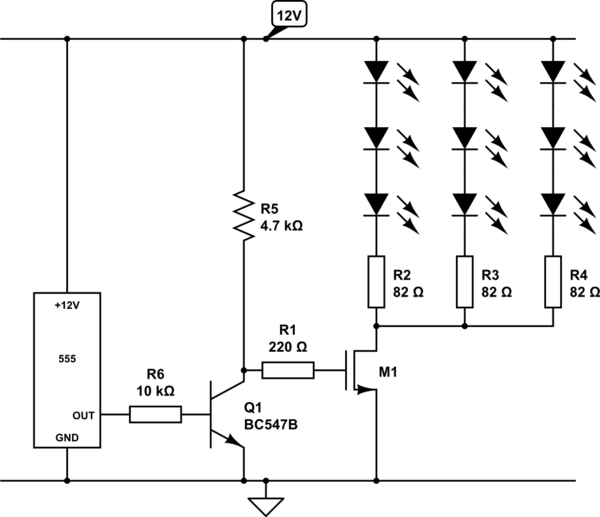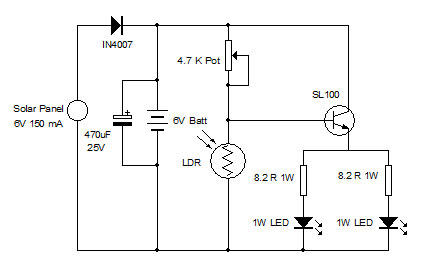
LED VU Meter

The circuit utilizes two quad voltage comparators (LM339) to illuminate a series of eight LEDs that indicate volume levels. Each of the eight comparators is biased at progressively higher voltages established by a voltage divider, allowing the lower right LED to activate first when the input reaches approximately 400 millivolts or around 22 milliwatts peak in an 8-ohm system.
The circuit design employs the LM339, a quad comparator, which is capable of comparing input voltage levels against predefined reference voltages. The voltage divider configuration is crucial for establishing these reference levels, ensuring that each comparator activates at specific thresholds corresponding to the desired volume levels.
In this setup, the input signal is fed into the non-inverting terminals of the LM339 comparators. The inverting terminals are connected to the voltage divider outputs, which are derived from a stable reference voltage. As the input signal increases, it eventually surpasses the reference voltage set by the first comparator, turning on the first LED. This process continues sequentially, with each comparator turning on its corresponding LED as the input voltage crosses the respective thresholds.
The output of each comparator is connected to the anode of each LED, while the cathodes are grounded. Resistors are placed in series with the LEDs to limit current and prevent damage. The design ensures that the LEDs illuminate progressively, providing a visual representation of the volume level, with the first LED indicating the lowest level and the last LED indicating the highest.
This circuit is particularly useful in audio applications, where visual feedback on volume levels is desired. The use of LM339 comparators allows for precise voltage comparisons, ensuring reliable operation across a range of input conditions. Additionally, the simplicity of the design makes it easy to implement in various electronic projects, providing a straightforward method for volume indication using LED displays.The circuit below uses two quad voltage comparators (LM339) to illuminate a series of 8 LEDs indicating volume level. Each of the 8 comparators is biased at increasing voltages set by the voltage divider so that the lower right LED comes on first when the input is about 400 millivolts or about 22 milliwatts peak in an 8 ohm system
🔗 External reference
The circuit design employs the LM339, a quad comparator, which is capable of comparing input voltage levels against predefined reference voltages. The voltage divider configuration is crucial for establishing these reference levels, ensuring that each comparator activates at specific thresholds corresponding to the desired volume levels.
In this setup, the input signal is fed into the non-inverting terminals of the LM339 comparators. The inverting terminals are connected to the voltage divider outputs, which are derived from a stable reference voltage. As the input signal increases, it eventually surpasses the reference voltage set by the first comparator, turning on the first LED. This process continues sequentially, with each comparator turning on its corresponding LED as the input voltage crosses the respective thresholds.
The output of each comparator is connected to the anode of each LED, while the cathodes are grounded. Resistors are placed in series with the LEDs to limit current and prevent damage. The design ensures that the LEDs illuminate progressively, providing a visual representation of the volume level, with the first LED indicating the lowest level and the last LED indicating the highest.
This circuit is particularly useful in audio applications, where visual feedback on volume levels is desired. The use of LM339 comparators allows for precise voltage comparisons, ensuring reliable operation across a range of input conditions. Additionally, the simplicity of the design makes it easy to implement in various electronic projects, providing a straightforward method for volume indication using LED displays.The circuit below uses two quad voltage comparators (LM339) to illuminate a series of 8 LEDs indicating volume level. Each of the 8 comparators is biased at increasing voltages set by the voltage divider so that the lower right LED comes on first when the input is about 400 millivolts or about 22 milliwatts peak in an 8 ohm system
🔗 External reference





